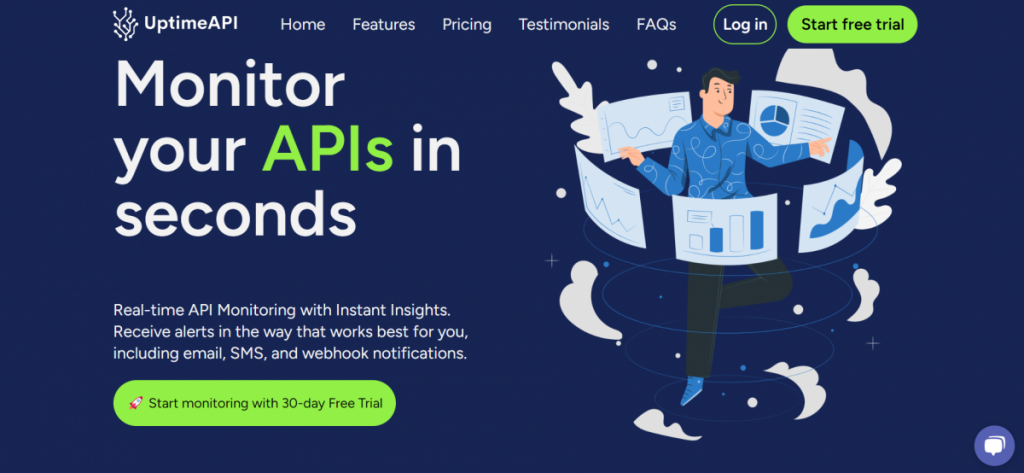In today’s digital age, where virtually every aspect of our lives is intertwined with technology, the performance of application programming interfaces (APIs) has never been more crucial. Businesses, developers, and users rely on APIs to facilitate seamless communication between software components, making API response time a pivotal metric to monitor. This article aims to shed light on the importance of API response time monitoring and guide you through the best practices to ensure optimal performance. Let’s discover how to Monitor API Response Time.
Response Time vs. Latency: Unveiling the Distinction
Firstly, let’s clarify the distinction between response time and latency, as they are often used interchangeably but carry distinct meanings. Response time encompasses the total time taken for an API to process a request and deliver a response. It encapsulates the backend processing time, network transit time, and any other delays. On the other hand, latency focuses solely on the delay caused by the network. Understanding this difference is essential for accurate monitoring and troubleshooting.
Exploring Throughput and Error Rate
Secondly, in the realm of API response time monitoring, two additional metrics warrant attention: throughput and error rate. Throughput measures the number of requests an API can handle within a given time frame. A high throughput is desirable, but it must be balanced with response time to ensure responsiveness.
Simultaneously, the error rate quantifies the frequency of errors occurring during API interactions. Monitoring error rates can help identify and rectify issues that impede the seamless functioning of APIs, thereby enhancing user satisfaction.
Use Uptime API To Monitor API Response Time
Uptime API is the best tool to Monitor API Response Time. It is a cloud-based solution that provides comprehensive monitoring of your APIs, including uptime, response time, and errors. This gives you a complete picture of the performance of your APIs. This tool is easy to use and can be set up in minutes. It also offers a variety of features that make it the best tool to monitor API response time. And you don’t need to install any software or hardware!
Uptime API offers a variety of features that make it the best tool to monitor API response time. These features include:
-Real-time monitoring: It monitors your APIs in real-time. This means that you will receive a notification immediately if there is a problem with your APIs.
-Customizable alerts: Uptime API allows you to create custom alerts.
-Historical data: It stores historical data about your APIs. This allows you to track the performance of your APIs over time.
-Reporting: It offers a variety of reports that can help you to understand the performance of your APIs. These reports include uptime reports, response time reports, and error reports.
Watch this interesting video:
In conclusion, monitoring API response time is an indispensable practice for maintaining the performance and reliability of modern applications. Uptime API is the best tool to monitor API response time because it offers comprehensive monitoring, a cloud-based solution, easy-to-use features, and a variety of reports. Visit the website for more info.
Read this post: Quick Guide For WhatsApp Phone Number Verification API In 2024



